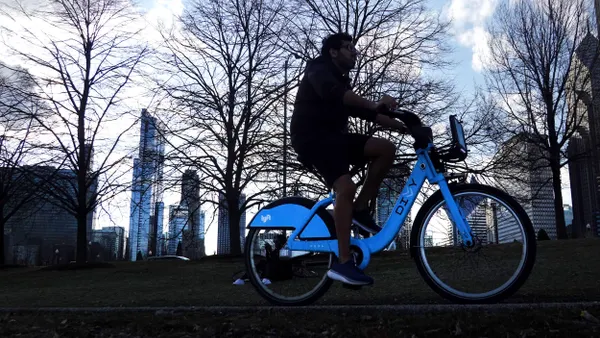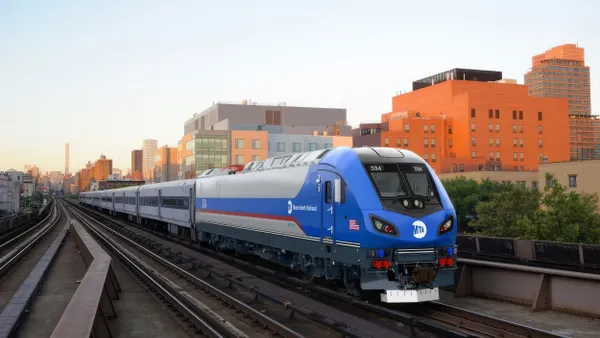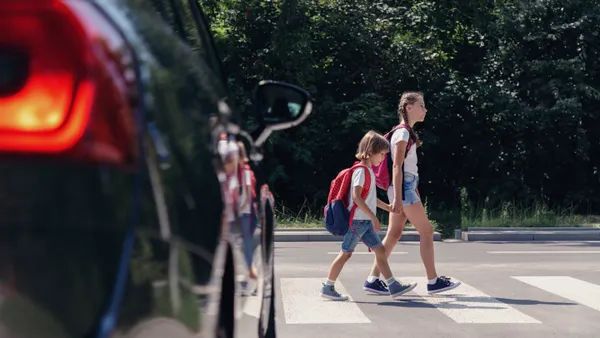Dive Brief:
- Toyota announced plans to build a fully connected, prototype city of the future at the base of Mt. Fuji in Japan. A phased groundbreaking is expected early next year, and Denmark's Bjarke Ingels Group (BIG) will be the architects.
- The 175-acre site, called Woven City, will run on hydrogen fuel cells and house full-time residents including Toyota employees and their families, retirees, retailers and researchers. It will serve as a real-world testbed for technologies including autonomous vehicles (AVs), robotics, personal mobility, artificial intelligence (AI) and smart homes. About 2,000 people initially will live there and more could join as the project matures.
- "This was on our mind when we were making plans to close a factory in Japan... and we were wondering what to do with this soon to be available land near Mt. Fuji," Akio Toyoda, president of Toyota Motor Corp., said at CES in Las Vegas, according to a transcript provided by the company. "We plan to build our city in the virtual world first... creating a digital twin that will allow us to test our theories before we build."
Dive Insight:
Toyoda said on-stage the company initially considered transforming the old factory site into an artificial city for testing emerging technologies, similar to the Mcity testing ground on the campus of the University of Michigan in Ann Arbor, MI. Instead, the company chose to make a real city with inhabitants. The project would allow for testing more like real life while still being a safer, more controlled environment than an existing city.
Toyota has been working with BIG for eight months on the city design. Streets will have a new design to emphasize efficiency, safety and sustainability, and residents will only be able to travel on the city's main thoroughfares in fully autonomous, zero-emission vehicles.
"Today the typical street is a mess with everything and nothing everywhere," BIG architect Bjarke Ingels said on-stage at CES, according to the transcript. "So we started by splitting the typical street into three separate forms of mobility."
The streets will consist of faster transportation such as the AVs, an urban promenade for pedestrians and slower forms of mobility and a pedestrian-only parkway. The streets will form grids of 3x3 city blocks surrounding a park or courtyard.
Much of the city's infrastructure will be underground, including hydrogen fuel cells and water filtration systems, along with a network for autonomous goods delivery that connects to the above-ground buildings. Homes will be equipped with cutting-edge technologies such as sensor-based AI to check residents' health and enhance their lives.
The city is designed with sustainability in mind. Rooftops will have solar panels to supplement the underground hydrogen power, buildings will be constructed primarily of wood and hydroponics and native species will be installed throughout the city.
Building a city from the ground up carries the benefit of installing the latest technologies and not having to worry about compatibility or retrofits with aging infrastructure. But it also bears the burden of a substantial capital investment all at once, rather than incrementally building on previous infrastructure over time, as traditional cities do.
Other manufactured smart cities have been proposed, but so far none have come to fruition. In fall 2017, a Bill Gates investment firm made an $80 million land purchase in Arizona on which he proposed building a smart city called Belmont. While the location offers ample opportunities for solar energy, questions have arisen about the feasibility of building a new city in a water-strapped area.
A plan has been in the works since at least 2016 to develop the Gramercy District smart city in Loudoun County, VA. However, little work has occurred on that site, and Bisnow suggested last summer that developers are waiting to build until they sense adequate demand.
And a proposal emerged a couple years ago for the Japan-Thailand Millennium Town project near Bangkok, which promised technologies including maglev trains. The project website indicates residents were to start moving in last year and the full city would be completed by the end of 2021, but few progress updates have been released.
Toyoda offered a bit of an explanation as to why an auto manufacturer would leap into creating a full smart city from scratch, noting that companies evolve over time.
"If you didn't know... Toyota actually began as a loom manufacturer," he said. "We didn't start by building cars... we began by weaving fabric... and now we hope to use our technology to weave together a new kind of city."











